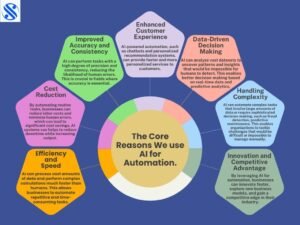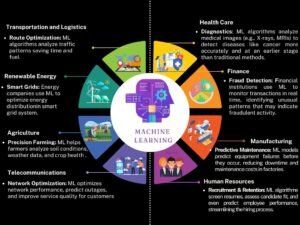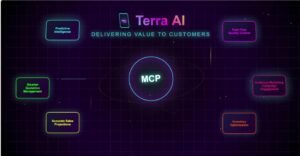Large Language Models (LLMs) are increasingly being adapted for music generation through innovations that allow them to understand and produce sequences of musical notes, just as they generate language. This process generally involves training LLMs on massive datasets of music to identify patterns, structures, and stylistic elements. Here’s a look at how LLMs are contributing to music generation:
1. Transformers in Music Generation
- The transformer architecture, which is central to LLMs, is widely used for music generation. Just like with text, transformers break down music as sequential data (notes, chords, etc.) and apply attention mechanisms to understand dependencies within these sequences. Models such as GPT-3 or GPT-4, originally developed for text, can be fine-tuned on musical data to generate original music compositions, following a similar sequential prediction framework.
2. Music-Specific LLMs
Some models have been specifically developed for music generation, like MusicLM by Google. This model can generate coherent, high-quality music by conditioning on text descriptions of music and by understanding complex features in musical datasets. It is trained on large corpora of music and has the capability to generate long compositions with coherent structure.
Jukedeck, OpenAI’s Jukebox, and MuseNet are other examples of music-specific LLMs that combine the transformer’s sequence prediction strengths with music theory insights. Jukebox, for instance, is trained not only on music data but also on the associated metadata (such as genre, artist, lyrics) to control the style and mood of generated pieces.
3. Tokenization of Music Data
- LLMs need data in a tokenized form, similar to how words are tokenized in language models. For music, tokenization often involves converting notes, chords, and even rhythm into discrete tokens. Different approaches exist for tokenizing music, like MIDI encoding, where notes are broken down by pitch, duration, and velocity. This allows LLMs to “understand” and generate music in a structured manner.
4. Multi-modal Learning
- Some advanced music LLMs use multi-modal learning, which lets models process both audio and text inputs. For example, models like MusicLM can take a text prompt describing a musical style and generate music to match that description. This integration of different data types broadens the model’s understanding and enables it to mimic styles or moods based on user input.
5. Latent-Space Exploration and Fine-Tuning
- Fine-tuning music LLMs on specific genres, styles, or historical periods allows for stylistic control. Models like OpenAI’s Jukebox use latent-space exploration to produce variations in genre and mood by navigating through different regions in their internal learned representations. This way, the model can produce original music that adheres to certain stylistic guidelines.
Applications and Use Cases
- Soundtrack Generation: Music LLMs can be used to generate custom soundtracks based on specific themes or emotions, useful for film, games, and ads.
- Interactive Composition: LLMs can assist composers by suggesting harmonies, melodies, or rhythms, making them valuable in collaborative composition.
- Educational Use: LLMs can generate music exercises or practice compositions for students learning music, adjusting difficulty and style according to educational needs.
Here are some notable examples of LLMs specifically developed for music generation:
1. MusicLM by Google
- Overview: MusicLM is a powerful model developed by Google that generates high-quality music from textual descriptions. The model is trained on vast datasets of music and is capable of producing compositions with rich textures, rhythms, and styles.
- Features: MusicLM can take descriptive prompts (e.g., “a calming piano tune with hints of jazz”) and generate coherent, stylistically appropriate music. It uses a hierarchical sequence modeling approach to capture the structure of long musical sequences.
2. OpenAI’s Jukebox
- Overview: Jukebox is a neural network developed by OpenAI designed to create music with both lyrics and audio. It’s trained on raw audio data and genre/style tags, making it capable of generating music in various genres with specific artist styles.
- Features: Jukebox can generate music complete with vocals and lyrics, allowing it to mimic well-known artists or even blend styles. It’s particularly unique for generating both audio and lyrics, with the ability to control genre, artist, and mood.
3. MuseNet by OpenAI
- Overview: MuseNet is another OpenAI model that generates music by predicting sequences of MIDI data rather than audio. It’s capable of creating multi-instrument compositions in various styles, from classical to pop.
- Features: MuseNet can compose 4-minute songs with 10 different instruments, blending styles from artists like Mozart and the Beatles. It works by building on the transformer architecture and has been fine-tuned on vast amounts of music data to understand harmonics and style.
4. AIVA (Artificial Intelligence Virtual Artist)
- Overview: AIVA is designed for creating original compositions for media such as film, video games, and commercials. It uses deep learning to analyze classical music compositions and generate similar music.
- Features: AIVA can create compositions in a variety of genres, particularly focusing on orchestral, piano, and jazz music. It’s popular in the gaming and cinematic industries for creating background scores.
5. Riffusion
- Overview: Riffusion is a unique application that generates music using a technique called stable diffusion rather than transformers. It converts audio spectrograms into images, which are then processed by a diffusion model to create new music patterns.
- Features: Riffusion’s approach to music generation allows it to create endless loops and seamless transitions, making it suitable for ambient and generative music. It has a user-friendly interface, where users can generate music by adjusting style sliders.
6. JukeBox AI by Amper Music
- Overview: JukeBox AI by Amper Music is a commercially available AI that generates music for background scores, helping content creators add royalty-free music to videos, podcasts, and games.
- Features: It offers tools for customizing music based on genre, mood, and instrumentation, making it accessible for non-musicians. Though it’s simpler than research-focused models, it’s robust enough for producing quality music for commercial use.
These models demonstrate the diverse potential of LLMs in music, from composing complex classical music to generating interactive and adaptive soundscapes for digital media.
The application of LLMs in music generation is a fascinating frontier, combining computational creativity with pattern recognition, making music generation faster, more accessible, and increasingly customizable.





Boost your https://graming.com/free-tiktok-followers activity an easy and safe way to expand your audience and make your profile visible. Try free boost and enjoy the result!
süpürge bakım kampanyası Parça değişiminden sonra süpürgem çok güçlü çalışıyor. https://melaninbook.com/read-blog/43977
akustik su kaçak tespiti İstanbul’un en iyi su kaçağı tespit firmalarından biri. Kesinlikle öneriyorum. https://ai.ceo/ustaelektrikci
İstanbul tesisatçı su kaçak tespiti Suadiye su kaçağı tespiti: Suadiye’de su kaçağı sorunlarına son veren çözümler. https://aubameyangclub.com/ustaelektrikci
Maslak su kaçağı tespiti Ortaköy su kaçağı tespiti: Ortaköy’de su kaçağını nokta atışıyla tespit ediyoruz. https://rapagram.com/ustaelektrikci
BWER delivers robust, precision-engineered weighbridges to businesses across Iraq, combining state-of-the-art technology with local expertise to support infrastructure and logistics growth.
Can you be more specific about the content of your article? After reading it, I still have some doubts. Hope you can help me.
Thanks for sharing. I read many of your blog posts, cool, your blog is very good.
Your article helped me a lot, is there any more related content? Thanks! https://accounts.binance.info/en-IN/register-person?ref=UM6SMJM3
I don’t think the title of your article matches the content lol. Just kidding, mainly because I had some doubts after reading the article. https://www.binance.info/join?ref=P9L9FQKY
Your point of view caught my eye and was very interesting. Thanks. I have a question for you.
I don’t think the title of your article matches the content lol. Just kidding, mainly because I had some doubts after reading the article.
Thank you for your sharing. I am worried that I lack creative ideas. It is your article that makes me full of hope. Thank you. But, I have a question, can you help me?
Thanks for sharing. I read many of your blog posts, cool, your blog is very good.
Thank you for your sharing. I am worried that I lack creative ideas. It is your article that makes me full of hope. Thank you. But, I have a question, can you help me?
Your point of view caught my eye and was very interesting. Thanks. I have a question for you.
where to buy generic clomid pill where can i buy generic clomid tablets clomiphene prices in south africa buying clomiphene cost cheap clomid for sale clomiphene cost uk can i order cheap clomid without a prescription
Your article helped me a lot, is there any more related content? Thanks!
Can you be more specific about the content of your article? After reading it, I still have some doubts. Hope you can help me.
Palatable blog you possess here.. It’s obdurate to on great status article like yours these days. I really respect individuals like you! Go through care!!
This is the stripe of serenity I get high on reading.
zithromax 250mg sale – buy generic sumycin for sale flagyl us
order rybelsus online – generic cyproheptadine periactin online order
motilium cost – sumycin 500mg usa cyclobenzaprine 15mg canada
Thanks for sharing. I read many of your blog posts, cool, your blog is very good. https://www.binance.com/ru-UA/register?ref=OMM3XK51
buy inderal paypal – clopidogrel cheap order methotrexate 10mg generic
I don’t think the title of your article matches the content lol. Just kidding, mainly because I had some doubts after reading the article.
Your point of view caught my eye and was very interesting. Thanks. I have a question for you.
buy amoxicillin no prescription – buy valsartan paypal combivent 100mcg canada
azithromycin 500mg brand – order zithromax 500mg sale order bystolic pill
augmentin 375mg for sale – https://atbioinfo.com/ buy generic ampicillin
nexium order – anexa mate nexium where to buy
generic coumadin 2mg – cou mamide cost hyzaar
buy meloxicam pills for sale – swelling purchase mobic for sale
order deltasone 40mg without prescription – aprep lson order prednisone 10mg
where can i buy ed pills – fastedtotake buy pills for erectile dysfunction
brand amoxicillin – buy amoxicillin tablets amoxil cheap
buy diflucan online cheap – https://gpdifluca.com/ buy fluconazole
lexapro 20mg generic – lexapro generic cheap lexapro 20mg
order cenforce without prescription – cenforcers.com order cenforce pill
where can i buy cialis online in australia – tadalafil (megalis-macleods) reviews cheap cialis dapoxitine cheap online
cialis 20 mg best price – tadalafil how long to take effect difference between cialis and tadalafil
ranitidine 150mg pill – https://aranitidine.com/# ranitidine 300mg canada
viagra women sale australia – https://strongvpls.com/ viagra 50mg price costco
Thanks for putting this up. It’s evidently done. https://gnolvade.com/es/prednisona/
I couldn’t resist commenting. Warmly written! buy accutane 20mg
I couldn’t resist commenting. Profoundly written! https://ursxdol.com/amoxicillin-antibiotic/
This website exceedingly has all of the information and facts I needed there this subject and didn’t positive who to ask. https://prohnrg.com/product/metoprolol-25-mg-tablets/
Thanks on putting this up. It’s well done. https://aranitidine.com/fr/acheter-cenforce/
Your article helped me a lot, is there any more related content? Thanks!
Your article helped me a lot, is there any more related content? Thanks!
Thanks for sharing. I read many of your blog posts, cool, your blog is very good.
This is the kind of writing I in fact appreciate. https://ondactone.com/product/domperidone/
This is the tolerant of post I unearth helpful.
https://doxycyclinege.com/pro/esomeprazole/
Thank you for your sharing. I am worried that I lack creative ideas. It is your article that makes me full of hope. Thank you. But, I have a question, can you help me? https://www.binance.com/join?ref=P9L9FQKY
This is a keynote which is virtually to my heart… Diverse thanks! Faithfully where can I find the phone details for questions? http://www.orlandogamers.org/forum/member.php?action=profile&uid=29101
buy dapagliflozin no prescription – buy dapagliflozin 10 mg without prescription buy generic dapagliflozin 10mg
buy orlistat online cheap – https://asacostat.com/ xenical 60mg ca
Thank you for your sharing. I am worried that I lack creative ideas. It is your article that makes me full of hope. Thank you. But, I have a question, can you help me? https://www.binance.com/sv/join?ref=PORL8W0Z
Can you be more specific about the content of your article? After reading it, I still have some doubts. Hope you can help me. https://www.binance.info/da-DK/register?ref=V2H9AFPY
More peace pieces like this would insinuate the интернет better. http://iawbs.com/home.php?mod=space&uid=916828
Can you be more specific about the content of your article? After reading it, I still have some doubts. Hope you can help me.
Thank you for your sharing. I am worried that I lack creative ideas. It is your article that makes me full of hope. Thank you. But, I have a question, can you help me?
I don’t think the title of your article matches the content lol. Just kidding, mainly because I had some doubts after reading the article.
You can protect yourself and your ancestors by being cautious when buying medicine online. Some pharmaceutics websites manipulate legally and put forward convenience, privacy, rate savings and safeguards over the extent of purchasing medicines. buy in TerbinaPharmacy https://terbinafines.com/product/inderal.html inderal
Your point of view caught my eye and was very interesting. Thanks. I have a question for you.
With thanks. Loads of expertise! this
I’ll certainly return to read more.
Thank you for your sharing. I am worried that I lack creative ideas. It is your article that makes me full of hope. Thank you. But, I have a question, can you help me?
Thank you for your sharing. I am worried that I lack creative ideas. It is your article that makes me full of hope. Thank you. But, I have a question, can you help me?
Thank you for your sharing. I am worried that I lack creative ideas. It is your article that makes me full of hope. Thank you. But, I have a question, can you help me?
Thanks for sharing. I read many of your blog posts, cool, your blog is very good.
Thanks for sharing. I read many of your blog posts, cool, your blog is very good.
Can you be more specific about the content of your article? After reading it, I still have some doubts. Hope you can help me. https://www.binance.info/register?ref=IHJUI7TF
Jili77login, eh? Quick and easy to log in, which is a major plus. Games load fast, and I haven’t had any issues yet. Could be a winner! You gotta give it a shot. jili77login
Taizowin, never heard of it before. Anyone got an invite code they wanna throw my way? Always down to check out a new platform. taizowin
Your article helped me a lot, is there any more related content? Thanks!